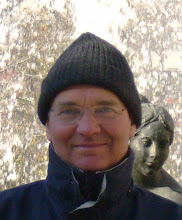
Not many details are available on the internet but it looks like the Belgrade lift rises about 15 metres to the bridge deck level, half the rise of the one proposed for Trenchard Street, so perhaps Bristol could still become the home of the highest dedicated bike lift in the World. The Belgrade lift gives some idea of how a Bristol lift could look and work, with entrance and exit doors on opposite sides so bicycles do not need to be turned in the lift. A 30 metre rise version could look quite spectacular.


Pedestrians as well as cyclists can benefit from such lifts, especially those with mobility problems, carrying shopping or with pushchairs. A lift is in effect just another element of a public transport system, providing a vertical rather than a horizontal displacement. Quite apart from the utility of such lifts they act as symbols of the seriousness with which non-motorised travel is taken and the value given to cyclists' and pedestrians' journeys. I wonder if Bristol is ready for such a culture shift?

The Brankova Bridge, Belgrade. Bike lift is just visible on extreme left.
Early indications are that our Cycling City still needs a few more decades to get used to the idea that serious investment in transport links for cyclists might be justified. Although Executive Member for Transport Jon Roger's has said the idea is "interesting" and that he is "prepared to consider all options, look at all ideas" there has been no further indication of interest from Bristol City Council.




9 comments:
I think Jon was as incredulous as most Bristolians at such a ridiculous idea, at least that's how I interpreted his reaction.
So what's "ridiculous" Des? The idea of public transport? The idea of public lifts? The idea of providing infrastructure for cyclists?
I think those in charge of transport in Bristol have a very blinkered, limited view of the situation. The BBC recently interviewed Cllr Jon Rogers and new transport supremo Peter Mann. See, for example, if you can find the word 'rail' in their answers.
Why can't we commnet on Adios Josh Hart?
In reply to "Why can't we comment on 'Adios Josh Hart'?", I've just posted a comment on that post so can't see that there is a problem.
Anyone else had problems commenting on that or other posts?
If Anon continues to experience difficulties commenting on that post, just post your comment here and I'll transfer it.
Woodsy challenges Peter Mann and I to "See, for example, if you can find the word 'rail' in their answers"
Well I used the word "train", does that count?
Happy to use the words "rail", RFA2, Portishead line, Ashton Gate station, Tram trains, Greater Bristol Metro, ITA, poor fare collection, Severn Beach Line, smart cards, information points, Henbury loop, improved timetables, re-signalling, half hourly service, electrification, HSR, etc, etc.
Always happy to listen to other words!
Jon
How about the word 'lift' Jon?
"Lift" is a good word too, Chris!
But probably not one to mention when asked "what are your top three priorities for sorting congestion in Bristol?"
Agreed, but neither is 'rail/train' in that context, given the miniscule modal share and uneconomic business model.
Surely 'congestion charging' would be the top priority, to balance supply and demand. As with the Banksy queue (you see why I made such an issue of it?) when demand exceeds supply people will pay an additional cost either in time (queuing/congestion) or money (entry/congestion charge).
If you want to reduce the time cost (congestion) then you have to increase the money cost (congestion charging) and/or increase the supply (of road capacity) and/or reduce demand by some other means (say rationing).
The problem with increasing the supply (of road capacity) is that demand grows to overwhelm the new supply, so you must increase supply yet again, and so on ad nauseam.
Increasing supply through increased public transport capacity is similarly futile because if it is priced too low demand to grow to overwhelm it in the same way and if it is over priced it will not be used.
Even if public transport is correctly priced to balance supply and demand and maximise revenue and occupancy (the Easyjet model) it does little to reduce congestion since prices are high at tmes of peak demand.
So we are left with increasing money cost of travel at congested times (congestion charging) or otherwise suppressing demand. Throwing money at public transport will achieve little except to increase the tax burden.
Post a Comment